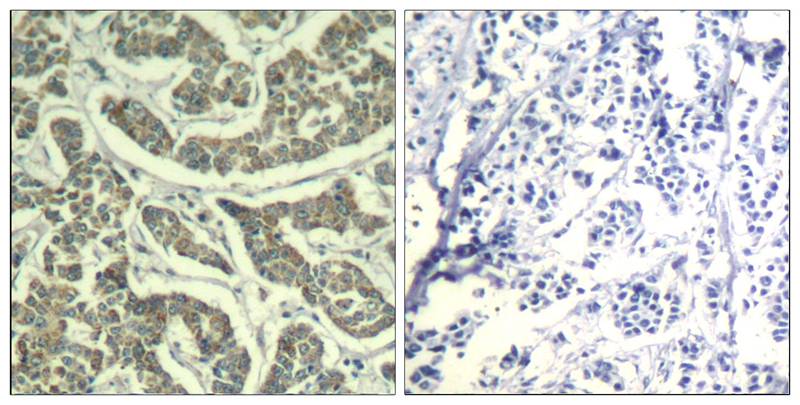Product Detail
Product NameATR(Ab-428) Antibody
Host SpeciesRabbit
ClonalityPolyclonal
PurificationAntibodies were produced by immunizing rabbits with synthetic peptide and KLH conjugates. Antibodies were purified by affinity-chromatography using epitope-specific peptide.
ApplicationsIHC
Species ReactivityHu
SpecificityThe antibody detects endogenous level of total ATR protein.
Immunogen TypePeptide-KLH
Immunogen DescPeptide sequence around aa.426~430 (G-I-S-P-K) derived from Human ATR.
Target NameATR
ConjugateUnconjugated
Other NamesFRP1; MEC1; SCKL; SCKL1;
Accession NoSwiss-Prot: Q13535
NCBI Protein: NP_001175.2
Uniprot
Q13535
Gene ID
545;
Concentration1.0mg/ml
FormulationSupplied at 1.0mg/mL in phosphate buffered saline (without Mg2+ and Ca2+), pH 7.4, 150mM NaCl, 0.02% sodium azide and 50% glycerol.
StorageStore at -20°C for long term preservation (recommended). Store at 4°C for short term use.
Application Details
Predicted MW: 250kd
Immunohistochemistry: 1:50~1:100
Immunohistochemical analysis of paraffin-embedded human breast carcinoma tissue using ATR(Ab-428) Antiobdy #21505(left) or the same antibody preincubated with blocking peptide(right).
ATR encoded by this gene belongs the PI3/PI4-kinase family, and is most closely related to ATM, a protein kinase encoded by the gene mutated in ataxia telangiectasia. This protein and ATM share similarity with Schizosaccharomyces pombe rad3, a cell cycle checkpoint gene required for cell cycle arrest and DNA damage repair in response to DNA damage. This kinase has been shown to phosphorylate checkpoint kinase CHK1, checkpoint proteins RAD17, and RAD9, as well as tumor suppressor protein BRCA1. Mutations of this gene are associated with Seckel syndrome. An alternatively spliced transcript variant of this gene has been reported, however, its full length nature is not known. Transcript variants utilizing alternative polyA sites exist.
Zhou, X.Z. et al. (1999) Cell Mol. Life Sci. 56, 788-806.
Pinna, L.A. and Ruzzene, M. (1996) Biochim. Biophys. Acta 1314, 191-225.
Kastan, M.B. and Lim, D.S. (2000) Nat. Rev. Mol. Cell Biol. 1, 179-186.
Shechter, D. et al. (2004) DNA Repair (Amst) 3, 901-908.
If you have published an article using product 21505, please notify us so that we can cite your literature.



 Yes
Yes



